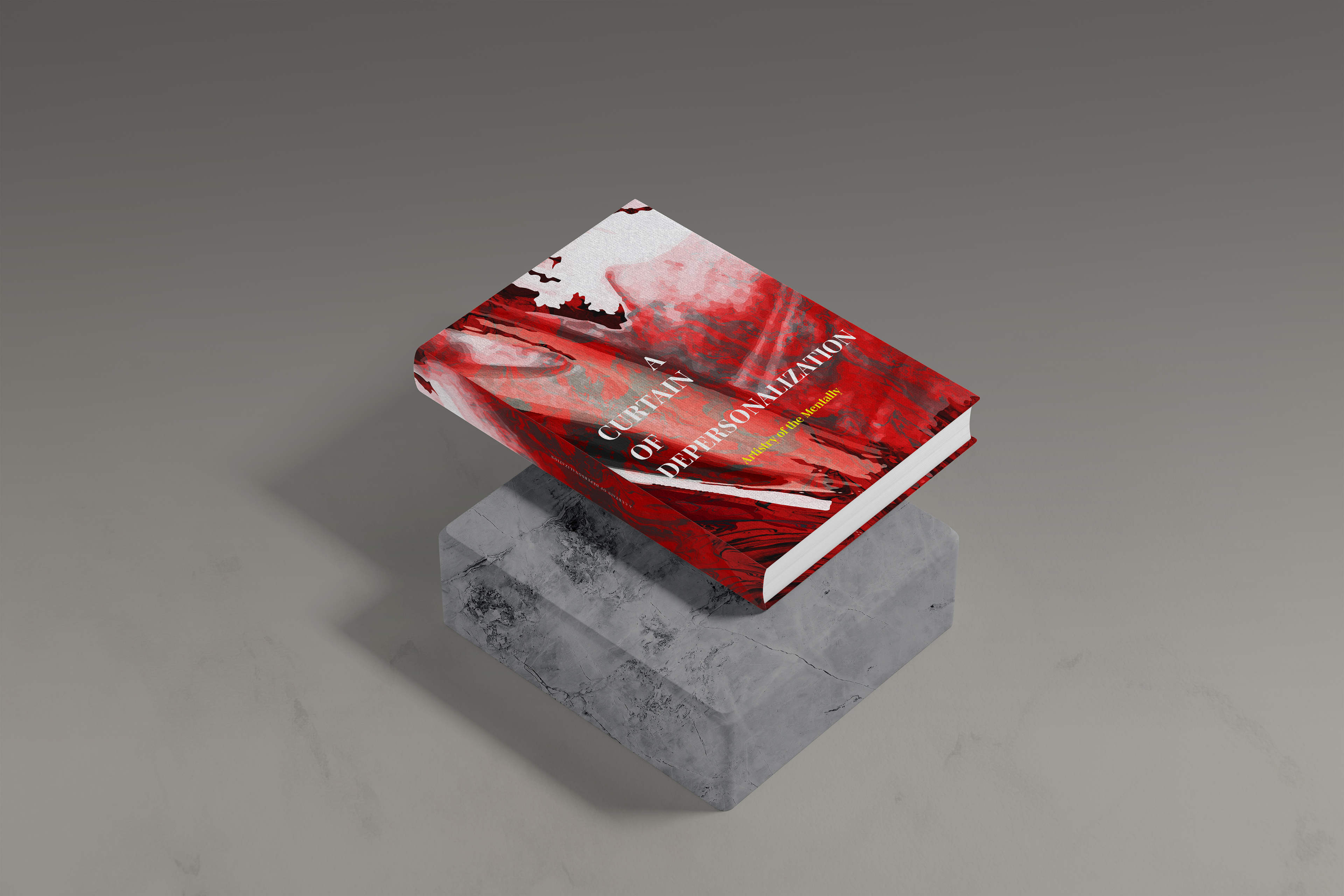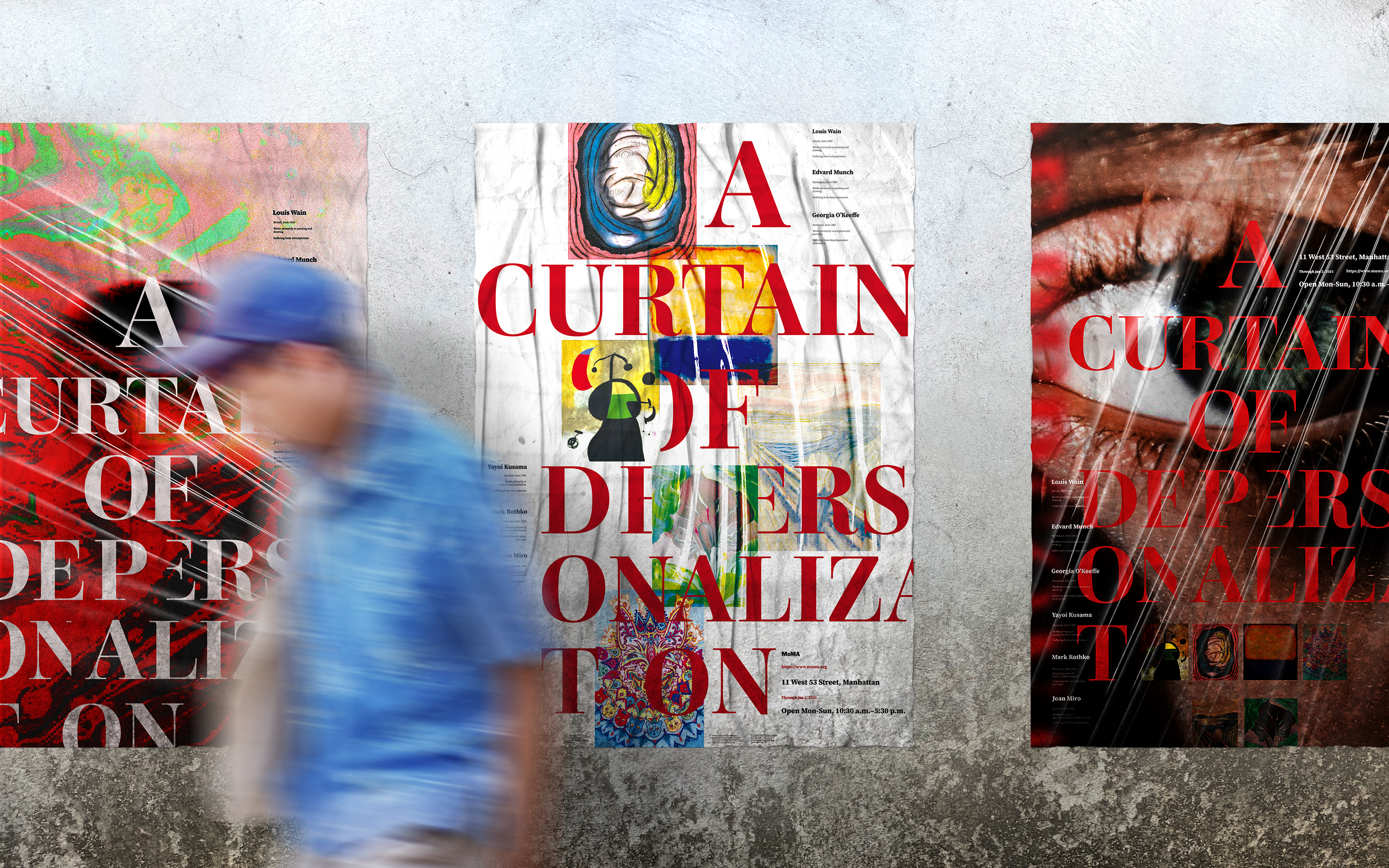
A Curtain of Depersonalization
︎︎︎print
︎︎︎publication
︎︎︎exhibition
︎︎︎publication
︎︎︎exhibition
This is a hypothetical exhibition project where I developed an identity and visual language for the exhibition which is applicable to the relevant catalog, promotional materials, and exhibition spaces. The exhibition is built around the theme - Art and Human Psyche. The exhibition seeks to embody the active human mentality and settles at the immediate moment between human perceptual (Creativity) and rational (Illness) behaviors. There are 6 chosen artists, Georgia O’Keeffe, Edvard Munch, Louis Wain, Yayoi Kusama, Mark Rothko, and Joan Miro; they are suffering from an array of mental disorders, for example, depression, schizophrenia, anxiety, or hallucination and etc., striving to depict the mental state of their entire life from a variety of perspectives: relations, environment, ecology, and aliment.
(thoughts)
Inspired by the publication “The Artistry of the Mentally," depicting the relationship between human perceptual and rational behaviors, I believe that arts can translate what we receive and perceive, and art is a tool to express our feelings and thoughts. Hence, the exhibition is created to explore art in the role of a mental translator.
(thoughts)
Inspired by the publication “The Artistry of the Mentally," depicting the relationship between human perceptual and rational behaviors, I believe that arts can translate what we receive and perceive, and art is a tool to express our feelings and thoughts. Hence, the exhibition is created to explore art in the role of a mental translator.












(inspiration)
The project was inspired by the publication “The Artistry of the Mentally Ill: The 1922 Book That Published the Fascinating Work of Schizophrenic Patients, and Influenced Paul Klee, Wassily Kandinsky & Other Avant Garde Artists.”, detailing the contributions of psychology and psychopathology of configurations. It’s an enduring irony of art history: artists whose works have come to define high cultures, are often characterized by various mental health issues. However, the artwork of the ordinary and anonymous people who struggled with those same issues are regarded as therapies, maybe, a diversion, or a meaningless form of work. Although the art world has created a market for “outsider art”, it would seem such work and their creators get viewed through an ethnographic lens, rather than humanizing portraits of the artist.

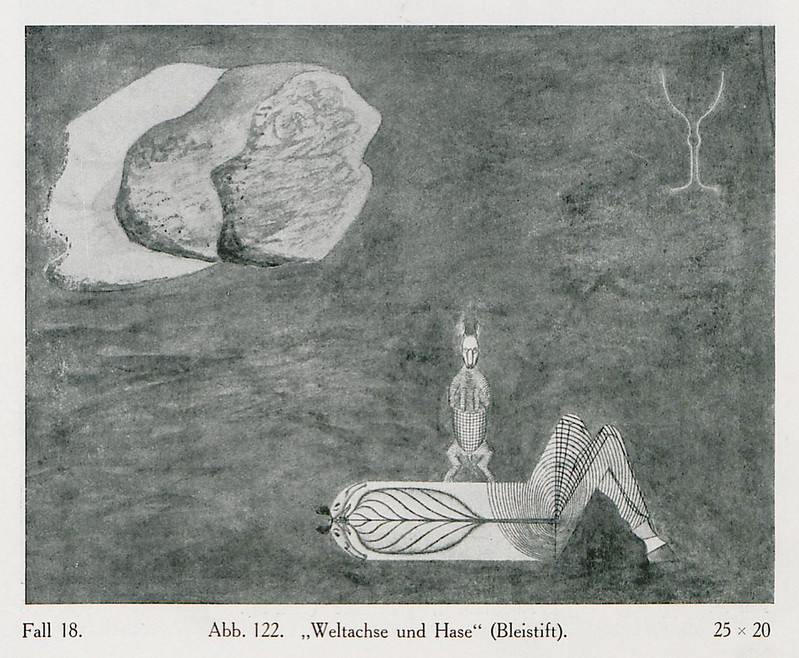




(visual language)
Creating this visual pattern to conceptualize the patient's mental states of confusion, anxiety, fear, and even anger. According to color psychology, red attracts the most attention and is associated with strong or passionate emotions such as love and anger. It's the universal color to signify strength, power, courage, and danger. Red is vibrant, stimulating and exciting with a strong message to suggest sexuality and increases appetites.

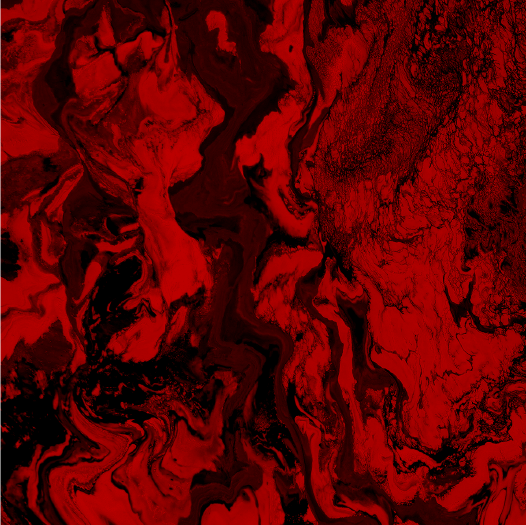

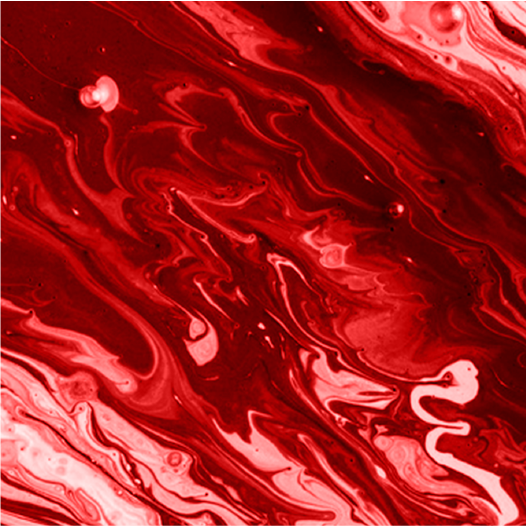
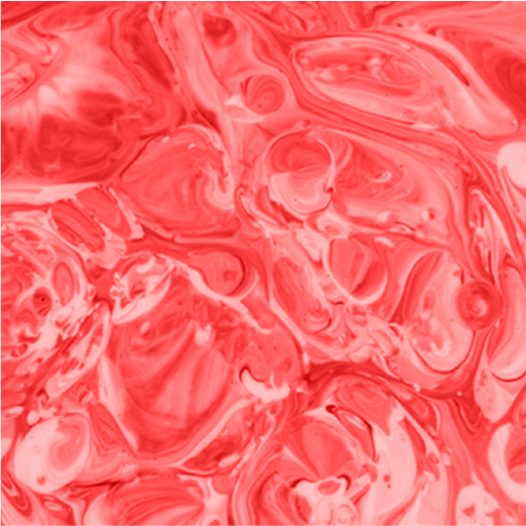
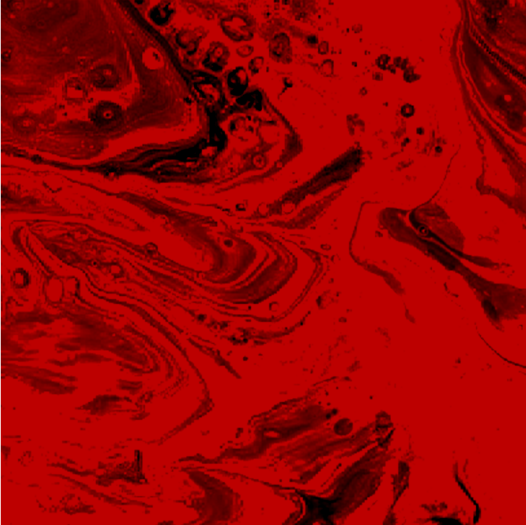
(promotional posters)
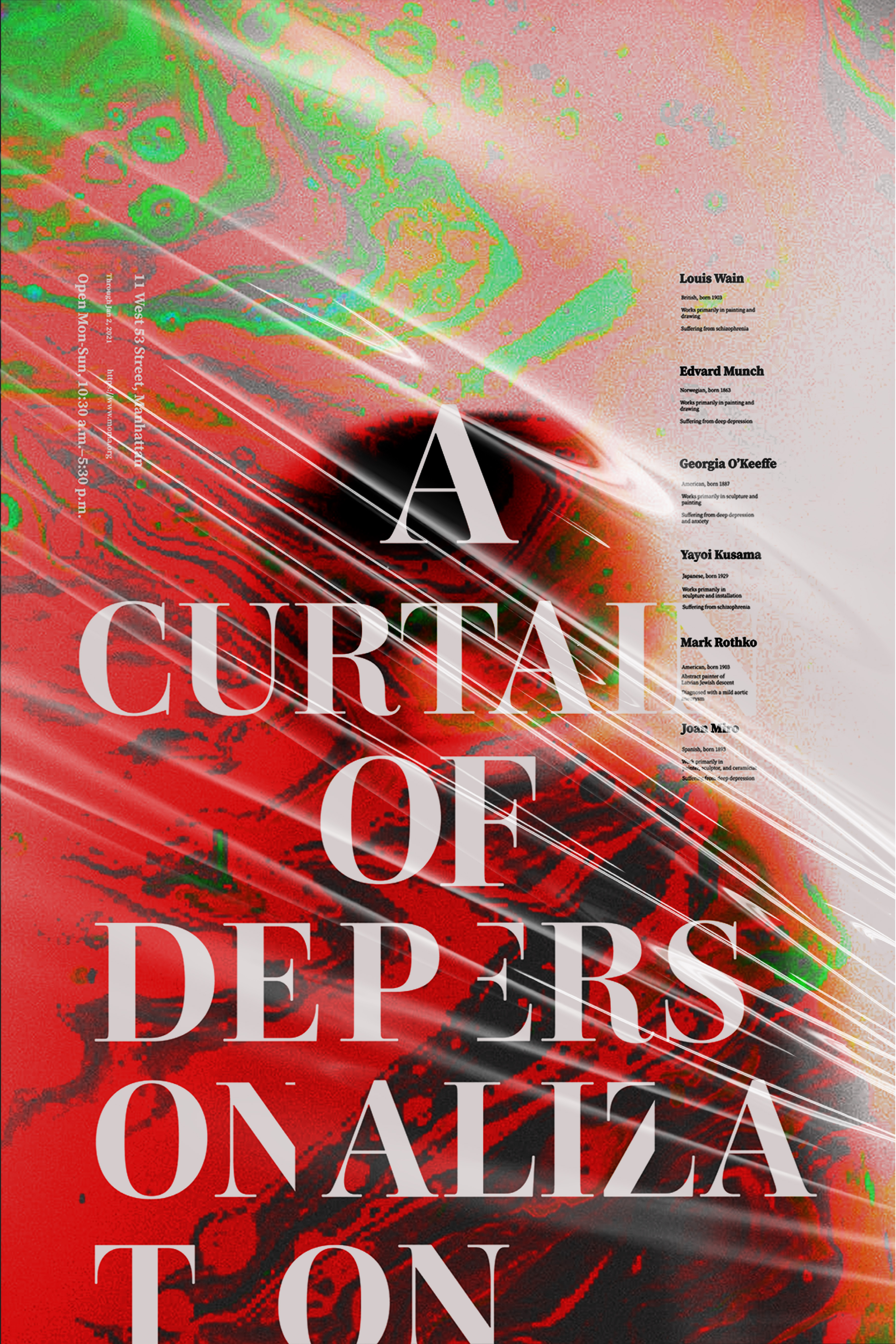

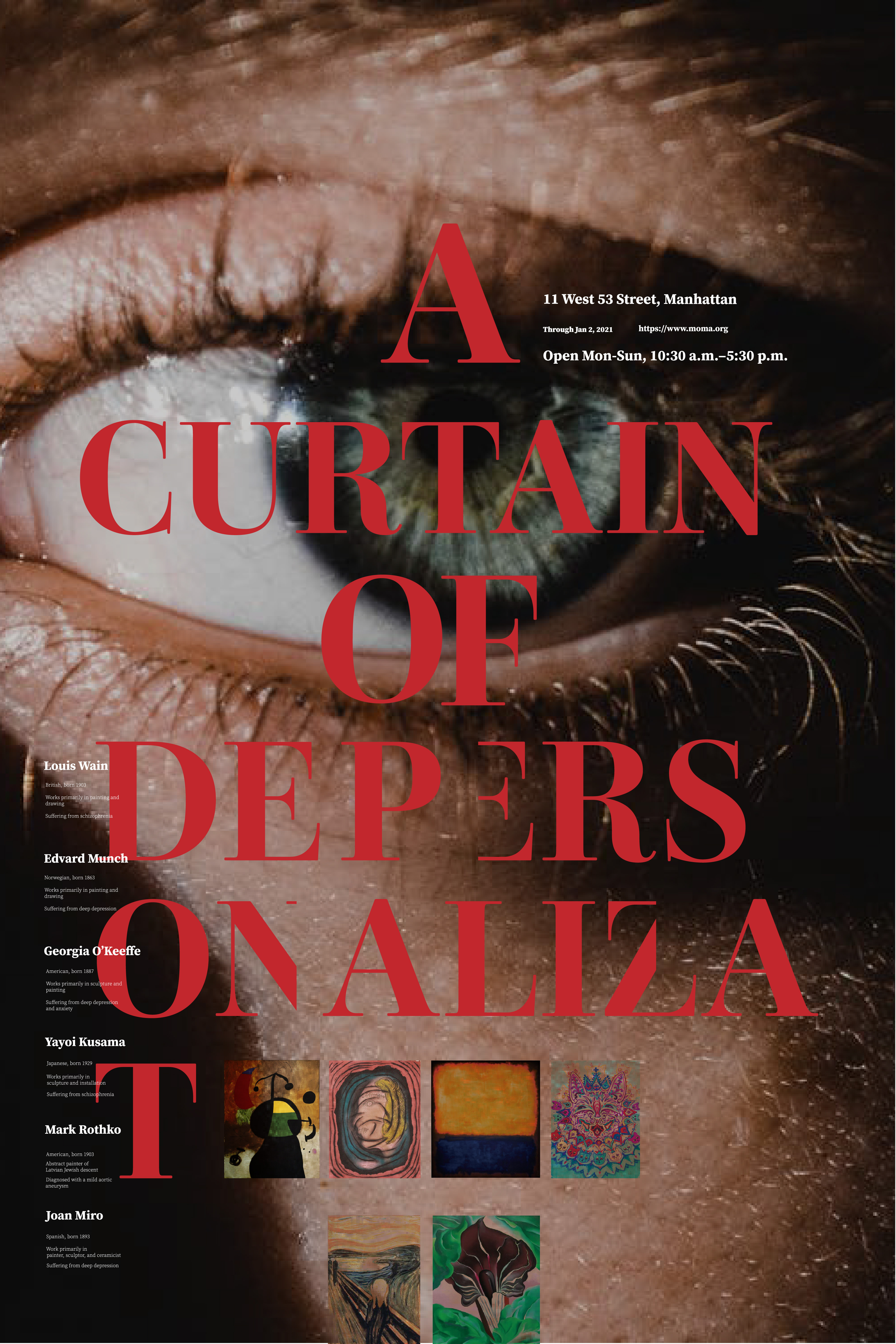

(publication)
